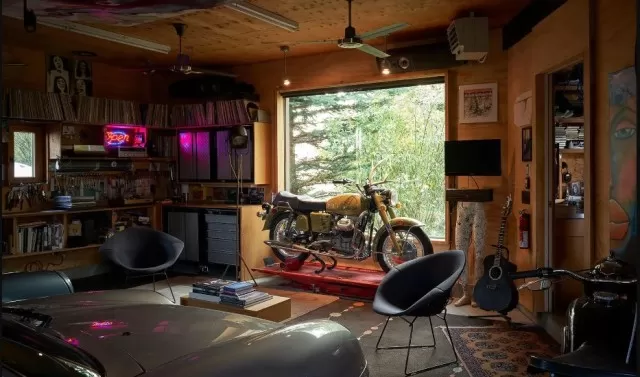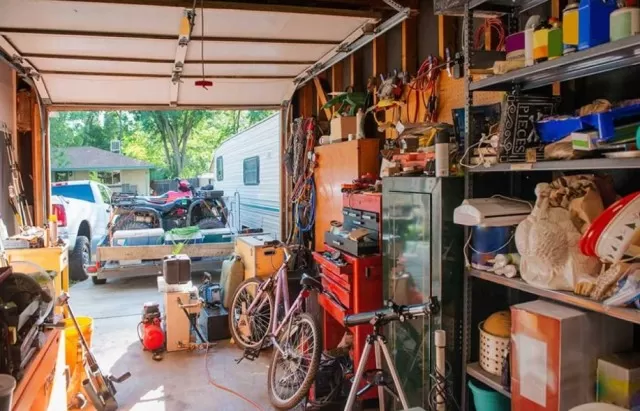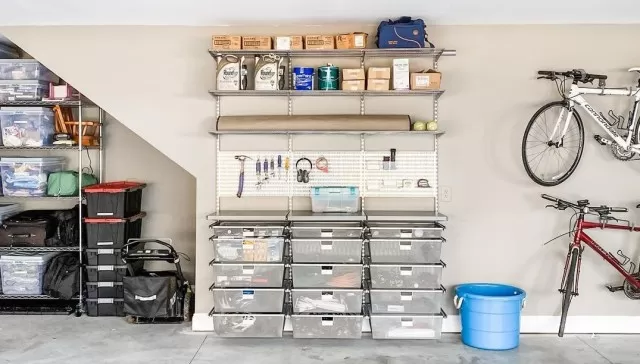A garage serves as a practical space for parking vehicles and additional storage outside the main Living Areas of your home.
However, it’s common for the garage to become a dumping ground for various items that you don’t have a designated place for.
Over time, the clutter can accumulate, making it difficult to use the garage efficiently.
If you’re determined to reclaim your garage and transform it into a well-organized space, it’s essential to tackle the cleanup project.
Although it may seem overwhelming, you can make significant progress by starting with the elimination of items you no longer need or use. By focusing on these eight items, you’ll jumpstart your garage organization and create a more functional and inviting space.
What is the standard garage size?

The standard size of a garage can vary depending on the country and local regulations.
In Australia, the Australian Standards specify the minimum dimensions for single and double garages.
A single garage in Australia is required to have a minimum size of 3.0m x 5. 4m, as per the Australian Standards.
This size allows enough space for one regular-sized vehicle. The average dimensions for a single garage in Australia are slightly larger, measuring approximately 3.6m (width) x 6m (length) x 2. 6m (height).
On the other hand, a double garage in Australia is designed to accommodate two sedan-style cars.
According to Australian Standards, a double garage must be a minimum of 5. 4m x 5.4m in size. However, the average size of a double-car garage is slightly larger, typically around 5.8m x 5. 8m.
It’s important to note that these dimensions are based on Australian guidelines, which are known for being strict.
All garages in Australia must adhere to or exceed these minimum standards to ensure adequate space for vehicles and compliance with regulations.
Items You Had Better Purge from Garage

Used Sports or Fitness Equipment.
Unused sports gear and fitness equipment can quickly accumulate in your garage, taking up valuable space.
Instead of letting them gather dust, consider decluttering these items. Donate any equipment that is still in good working condition to local recreation centers or charitable organizations that accept sports gear.
For items that are damaged or outdated, check your local recycling regulations to properly dispose of them.
Worn-Out Tools.
It’s time to say goodbye to tools that have seen better days.
Assess your collection and determine which tools are beyond repair or no longer serve their purpose. Replace them with new, functional tools and consider donating the usable ones to local charities, community gardens, or schools.
For tools that are no longer usable, contact your local waste management authority for guidance on recycling or proper disposal.
Abandoned Kids’ Toys.
Children’s toys that are no longer being used can take up valuable space in your garage.
Sort through the toys and decide which ones to keep and store in organized bins. Consider donating gently used toys to charitable organizations, selling them, or passing them on to other families.
For broken toys, explore toy recycling programs or contact your local recycling center for guidance on responsible disposal.
Broken Holiday Decorations.
Holiday decorations that are damaged or no longer functional should be cleared out from your garage.
If the decorations are still in good condition, consider donating them to organizations or individuals who can make use of them. For broken items, check with your local recycling center to see if they can be recycled before discarding them.

Partially Used Paints and Chemicals.
Expired or ineffective paints, cleaning products, and pesticides should not be stored in your garage due to the potential hazards they pose.
Safely dispose of these items according to your local regulations for hazardous waste. Some products may need to be dried out before disposal or taken to designated hazardous waste drop-off sites.
Always wear protective gloves when handling hazardous materials.
Unused Furniture.
If you have furniture in your garage that is no longer being used or doesn’t fit your space anymore, consider donating or selling it.
Pass down family heirlooms to other family members who can appreciate them or temporarily store them elsewhere until you have a suitable storage solution.
Leftover Building Materials.
It’s common to have extra building materials left over from past projects.
Evaluate whether it’s necessary to keep these materials in your garage or if they can be repurposed for other projects. If you don’t have a use for them, consider donating them to organizations like Habitat for Humanity or exploring local recycling options for building materials.
Items Awaiting Donation.
If your garage has become a temporary storage area for items you’ve decluttered from other parts of your house, it’s time to take action.
Take those boxes or bags of donations to a local donation center or arrange for a pick-up service. This will free up space in your garage and allow you to finally complete the task of donating those items.
*The information is for reference only.